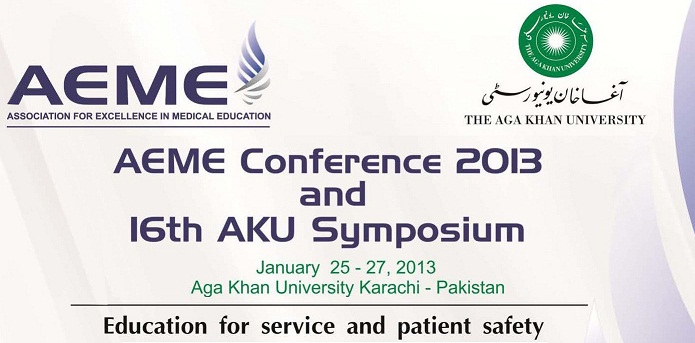Day 1 : Poster Presentations (Theme: Teaching and Learning)
Simulation based medical education (SBME): simulation based medical education (SBME): literature review of effectiveness and limitations
Location
Auditorium Pond Side
Start Date
26-1-2013 3:30 PM
Abstract
Background: To err is human, no doubt, but in medical profession this may bear a very heavy price; that of human life. Medical errors are the eighth commonest cause of mortality. It is no longer acceptable to use patients as primary learning models for healthcare provider students. Simulation offers a suitable alternative to allow student learning and initial demonstrations of competence to take place in a patient-free environment. The main objective of this research is to assess Simulation Based Medical Education (SBME) effectiveness and limitations according to published literature
Methods: Simulation based medical education (SMBE) yielded 1832 articles in Medline (PubMed). When research was scaled down by adding free full text articles of last five years then 136 articles were shown. The key words were Simulation based medical education, Patient Safety, high fidelity, low fidelity simulators. Inclusion criteria were all recent articles of which free full text was available on Google scholar and Medline. When Pakistan was added to these search words there were no studies on Medline, and Google Scholar showed studies from neighboring countries.
Results: Medical Research has replaced “see one do one and teach one” into “see one, simulate many, do one competently, and teach everyone”. ACGME recommends Simulation as the “best, second best option” for learning. Research has demonstrated simulation has high degrees of acceptance among learners. Medical educators have the responsibility to enhance the quality and Safety of medical education/training. Studies show that current limitations of SBME include clinical realism of the patient manikin, faculty development, cost, and resistance to change by health providers.
Conclusions: Quality Medical education does conflict with patient Safety. SBME has the potential to decrease the numbers and effects of medical errors, to facilitate open exchange in training situations, to enhance patient safety, and to decrease the reliance on vulnerable patients for training. The answer is in experiential learning that is Simulation. SBME is safe, effective, in controlled environment, with lesser stress as compared to real life patient situation.
Key words: Simulation based medical education, Patient Safety, high fidelity, low fidelity simulators
Simulation based medical education (SBME): simulation based medical education (SBME): literature review of effectiveness and limitations
Auditorium Pond Side
Background: To err is human, no doubt, but in medical profession this may bear a very heavy price; that of human life. Medical errors are the eighth commonest cause of mortality. It is no longer acceptable to use patients as primary learning models for healthcare provider students. Simulation offers a suitable alternative to allow student learning and initial demonstrations of competence to take place in a patient-free environment. The main objective of this research is to assess Simulation Based Medical Education (SBME) effectiveness and limitations according to published literature
Methods: Simulation based medical education (SMBE) yielded 1832 articles in Medline (PubMed). When research was scaled down by adding free full text articles of last five years then 136 articles were shown. The key words were Simulation based medical education, Patient Safety, high fidelity, low fidelity simulators. Inclusion criteria were all recent articles of which free full text was available on Google scholar and Medline. When Pakistan was added to these search words there were no studies on Medline, and Google Scholar showed studies from neighboring countries.
Results: Medical Research has replaced “see one do one and teach one” into “see one, simulate many, do one competently, and teach everyone”. ACGME recommends Simulation as the “best, second best option” for learning. Research has demonstrated simulation has high degrees of acceptance among learners. Medical educators have the responsibility to enhance the quality and Safety of medical education/training. Studies show that current limitations of SBME include clinical realism of the patient manikin, faculty development, cost, and resistance to change by health providers.
Conclusions: Quality Medical education does conflict with patient Safety. SBME has the potential to decrease the numbers and effects of medical errors, to facilitate open exchange in training situations, to enhance patient safety, and to decrease the reliance on vulnerable patients for training. The answer is in experiential learning that is Simulation. SBME is safe, effective, in controlled environment, with lesser stress as compared to real life patient situation.
Key words: Simulation based medical education, Patient Safety, high fidelity, low fidelity simulators

